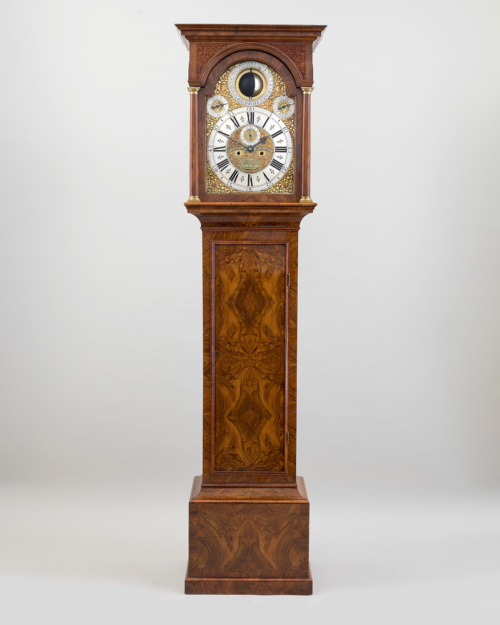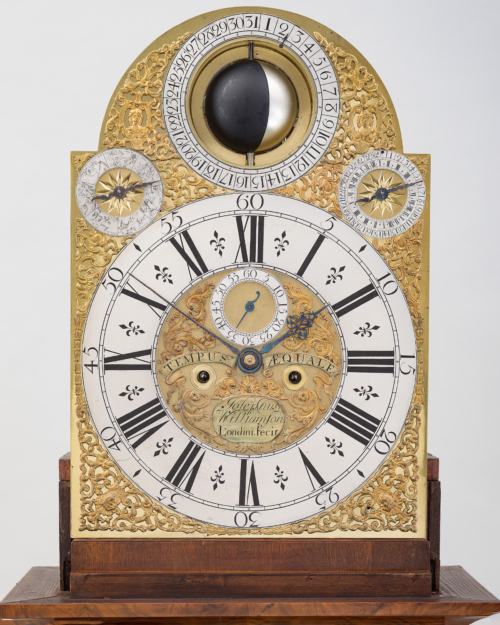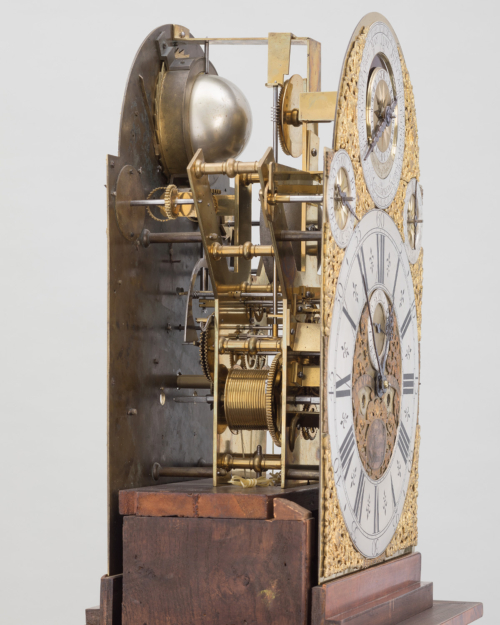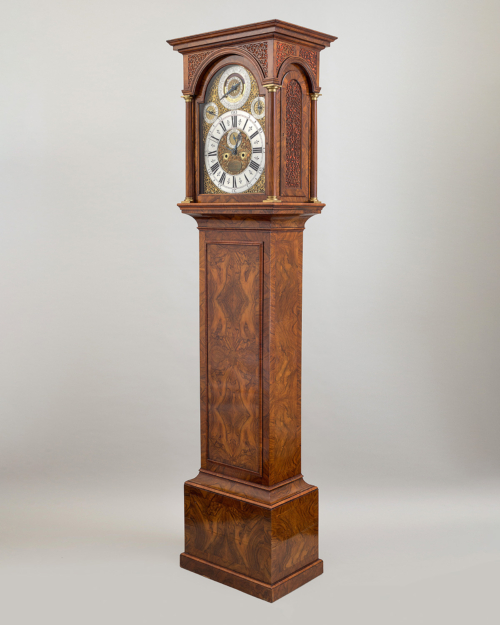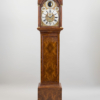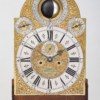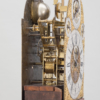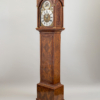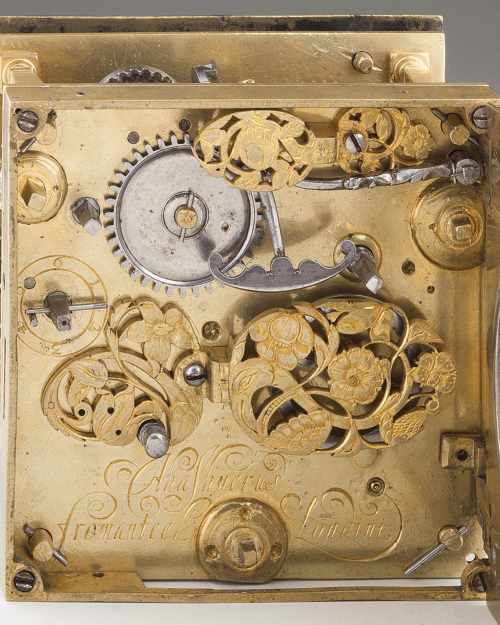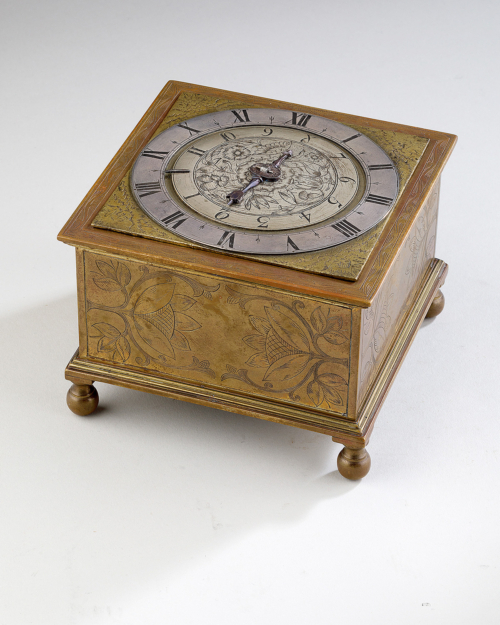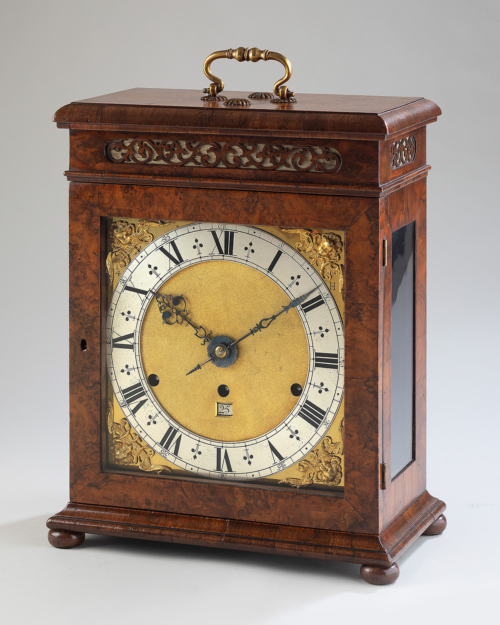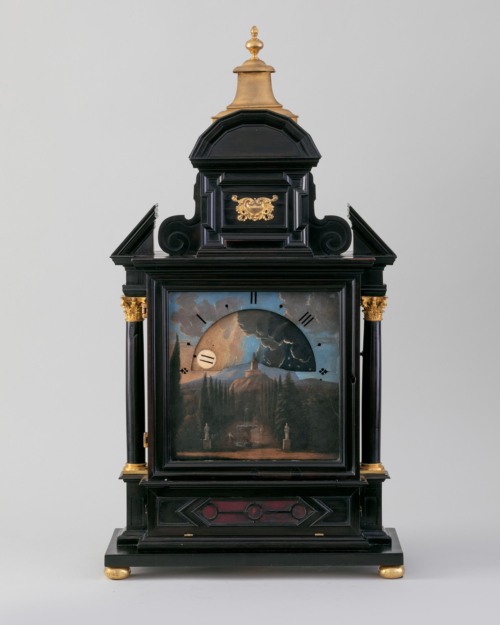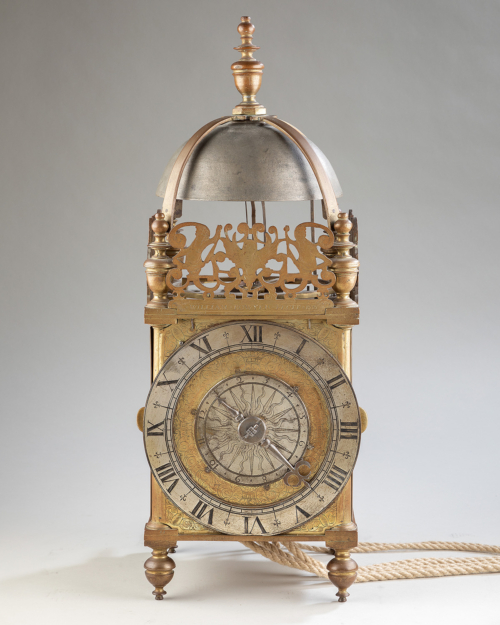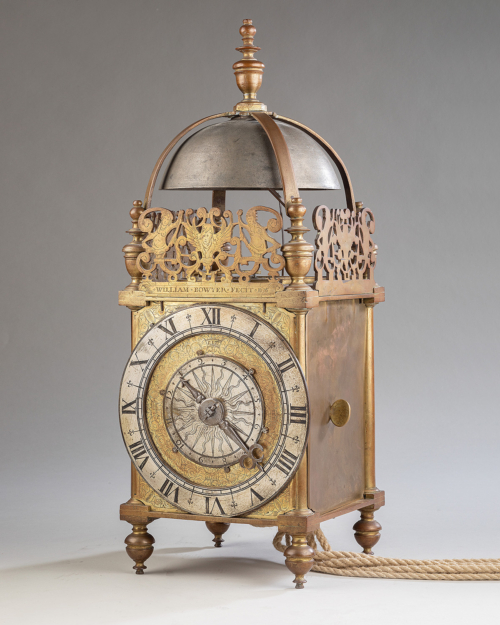| Stock No. | Exhibit No.38 |
| Height | 6 feet 10¾ inches (2102 mm) |
| Case | Purpose made for the academic and collector, Professor von Bertele, the oak carcass veneered in burr walnut with identical appearance to front and reverse, having flat-top hood with dial doors front and back and brass capped Tuscan columns to the four angles, the arched pierced-wood side fret panels fully detachable to view the movement either side, rectangular trunk doors front and back, over plain plinth on moulded skirting. |
| Dial | Both 13 by 19½ inches (330 by 495 mm): The back dial signed in the same manner with similar spandrels, the centre with seconds dial and inscribed Tempus Apparens [Solar Time] with silvered subsidiary Solar seconds ring and chapter ring, the latter with fleur-de-lys half-hour marks, the upper corners with subsidiary dials, that on the left for pendulum rise-and-fall regulation (calibrated 0-60), that to the right for strike/silent, the arch set with a year calendar ring enclosing ¾ circle sector with rising-and-falling shutters for length of daylight hours, inscribed at the base Tempus Ortus [Sunrise] & Occassus Solis [Sunset], itself centred by a twice XII hour ring for reading against the shutters as during the year they rise and fall. NB: the ‘universal’ tide dial ‘consists of two concentric rings, the outer one fixed carrying the days of the moon’s age and an inner ring, with a friction clutch, marked I to XII twice over, so that, when the time of high tide at new moon at any port in the world be ascertained, that hour can be set under the 29½ division of the outer ring, and the dial will record the daily changes for that port. |
| Movement | The movement of great complexity and ground-breaking inventiveness (employing both friction clutches and differential gearing for seemingly the first time in clockwork) with five ring-turned pillars pinned to the front of the main, rectangular part of the plates which have diagonally-aligned, integral vertical arms extending from the upper corners flanking a single, central vertical extension, thereat with five additional conforming pillars, the going with maintaining power to semi-deadbeat escapement, the hour strike by rack on vertically-aligned bell within the ‘tree-top’ part of the plates, the variation of the rate of the solar dial effected via an equation kidney run via a vertical rod and worm off the mean time train, the conversion to ensure clockwise rotation of the hour and minute hands of both mean and solar dials effected via differential gearing. |
| Duration | 8 days, with the option of winding from either side |
| Provenance | Discovered by HA Lloyd in an ordinary longcase with its rear dial against the backboard in the office of a garage proprietor in Twickenham, on whose death his executors eventually sold to: |
| Literature | Antiquarian Horology, Dec. 1955, H von Bertele, ‘The Equation Clock Inventions of Joseph Williamson’, p.123-127; |
| Escapement | Anchor |
The Bertele Williamson. Circa 1720
An exceptional George I double- dialled (front and back) equation clock movement with spherical moon by Joseph Williamson, London, in a later purpose made burr walnut case
£70,000
Additional information
| Dimensions | 5827373 cm |
|---|

